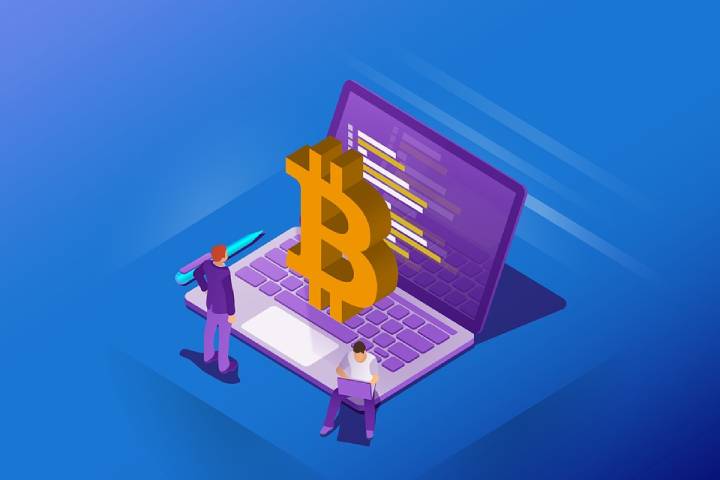Business
Text To Pay: 5 Reasons To Accept SMS Payments In Your Business
The future of business is expected to rely heavily on mobile technology. In this article, you’ll see five reasons why your business should start accepting SMS payments.

It’s generally believed that over two-thirds of the world population owns a mobile phone. Additionally, these phones are connected to their banking details and SMS services from their respective mobile phone service providers. As a result, many businesses are leveraging convenience with their customers through mobile phone-driven services. One of the recent developments in the use of mobile text messages to pay for products and services.
Many customers regard mobile phone payment through messages as convenient and secure. Furthermore, the process is simple and clear to understand. You don’t need to remember too many passwords. You can text to pay at the comfort of your home if the business from where you’re purchasing is synched with mobile phone service to receive payment text messages.
The future of business is expected to rely heavily on mobile technology. Therefore, if your business doesn’t allow customers to use this mode of payment, it might be high time to take the bold step of accepting SMS payments. In this article, you’ll see five reasons why your business should start accepting SMS payments. These are:
Convenient By convenient, it means you can meet with your customers where they want to pay from and how they’d like to do it. It’s believed that almost every mobile phone user keeps their phone within an arm’s reach most of the time.
It’s generally accepted that many mobile phone users may spend an average of two to three hours daily on their phones’ chat apps or social media platforms, like Facebook, WhatsApp, Twitter, and Instagram. Their engagement with mobile phones might also grow as there’s more content available on other platforms, such as YouTube, where you can watch videos.
Because of the proximity of the phones to users, banks send alerts to loanees as a reminder to repay installments through SMS. It’s easier to see a text message than an email, which might be seen days later. Such a high level of convenience in paying bills can result in on-time, stress-free transactions through the mobile phone messaging app.

Table of Contents
1. Speed
Unlike the use of documents in a banking hall, the process of paying your bills via SMS is speedy. What you need to do is to initiate the method of payment through your mobile phone service provider. Afterward, key in the required details of your account and the recipient’s account, and then send the message. Depending on your business’s system, your customer must follow a simple procedure that can be done in two to three minutes.
In case your account doesn’t have enough funds to settle your bill, you’re notified instantly. To complete your payment process, you can choose to replenish your account from another account using the SMS service. Once this transaction is completed, you’ll receive a text message notifying you that the transaction was successful. SMS payment removes the need to go online and log in to a particular portal to complete a process through SMS quickly.
2. Secure
SMS payment is a method that ensures that your customers are safe from phishing and other forms of online scams. On the other hand, it also protects you as online transactions can be an entry point to your business information by hackers.
Once a client has made a payment to your bank account, you’re notified that your account has been credited. Additionally, with a text message payment service, you can reverse a transaction that was done incorrectly on the spot. Your finances will then reflect in your account in a matter of minutes when changed.
3. Personalized Service
When you’re signing for a text-to-pay plan, you can provide your mobile number, payment funding method, and your communication preferences during the enrollment process. These pieces of data allow you to receive a personalized customer experience.

If you’re enrolling for a regular payment plan, you can specify how many days you want to receive an alert before the date is due for payment. Giving your customers the ability to choose when and how this communication is done helps you deliver a customer-tailored service according to the needs and preferences of your clients.
4. Reduced Administrative Costs
With text-to-pay services, you can eliminate the handling of credit cards or other manual work involved in paying your bills. On the other hand, as a seller, you cut down the level of paperwork in depositing finances. As a result, reduced administrative works leads to lower associated costs.
5. Wrapping Up
The future of money transfer will largely depend on text to pay services. Good network coverage and acceptance of the service by both customers and sellers are the driving factors. Billions of dollars are transacted daily through SMS payments.
The competition has taken the stakes high to give your esteemed customers convenience, speed, and security while sending money. Additionally, text to pay can help you provide personalized services and reduce administration costs for your business.
Business
Tax Filing Advice: Self-employment Tax (IRS Form 1040)
In this post, we’ll show you how to fill out Form 1040 and offer some tips on how to minimize your tax obligations. Tax Filing Advice – Self-employment Tax – IRS Form 1040.

Filing your taxes can be challenging, especially if you are a freelancer. As a freelancer, you are required to pay self-employment tax, maintain track of your revenues and expenses, and submit projected tax payments throughout the year. You can complete an IRS Form 1040 with a little help and a quarterly tax calculator, despite the fact that it could appear challenging. In this post, we’ll show you how to fill out Form 1040 and offer some tips on how to minimize your tax obligations.
Table of Contents
1. Assemble Your Papers
Before you start filling out your Form 1040, you must gather all the necessary information and paperwork. Your W-2s, 1099s for any freelance work you did, receipts for any anticipated tax deductions, and any other financial records you might have are included in this. You must also include your Social Security number and the Social Security numbers of any dependents you wish to claim.
2. Verify Your Filing’s Status
Your file status affects your tax rate and the size of your standard deduction. Determine which filing status is appropriate for you based on your marital status, the number of dependents you have, and other factors.
3. Ascertain your income
Your total income for the tax year is what is referred to as your gross income. This includes all forms of income, including wages, salaries, tips, and revenue from side jobs. Add up your income for the tax year and gather all of your supporting papers. List all of your sources of income from contract work.
4. Remove Your Modifications
By deducting adjustments from your gross income, you can reduce your taxable income. They also pay your health insurance premiums, student loan interest, and IRA contributions if you work for yourself.
5. Choose Your Tax Savings
By taking some expenses out of your taxable income, you can reduce it. The two distinct types of tax deductions are standard and itemized. The standard deduction is an agreed-upon sum of money that is available to all tax filers. As itemized deductions, you are allowed to deduct some costs like state and local taxes, charity giving, and mortgage interest. It is better to select the tax deduction that would result in the greatest financial savings.
6. In Step Six, determine your taxable income.
After subtracting either your standard deduction or your itemized deduction from your AGI, your taxable income will be determined. According to federal law, this amount is your taxable income.
7. Choose Your Tax Credits
They are made up of education, earned income, and child tax credits. To reduce your tax obligation, find out which tax credits you are eligible for.
8. Find Out How Much Tax You Owe
Your overall tax liabilities, less any payments or credits, are referred to as your tax burden.

9. Verify Your Upcoming Tax Payments
If you are self-employed, you must make estimated tax payments throughout the year. Check your expected tax payments throughout the year to ensure you made the required amount to avoid underpayment penalties.
10. Finishing Schedule C
Schedule C, the relevant form, is used to report your self-employment earnings and expenses. To calculate your self-employment tax, which is based on your net self-employment income, use Schedule C. In addition to this, you will also owe regular income tax.
11. Add Up Your Credits and Payments
Add all of your year-end payments, such as estimated tax payments and any taxes you have withheld from your pay. If you qualify, take a deduction for any tax credits. Here, your overall payments and credits will be displayed.
12. Figure out whether you owe a refund or are due one.
You should evaluate your entire tax burden in relation to your total payments and credits. If your tax due is greater than the sum of your payments and credits, you will be obliged to pay extra tax.
13. Upload Your Return
When you’ve finished filling out Form 1040 and any necessary attachments, sign and date your return, and then send it to the relevant IRS address. Make sure to keep a copy of your return and any supporting documents for your keeping.
14. Tips on How to Cut Your Taxes as Much as Possible
Now that you know how, let’s speak about how to complete Form 1040 so that you may maximize your tax savings as a freelancer.
Using tax deductions is a smart move.
As a freelancer, you might be eligible to write off a range of expenses from your taxes, such as business travel, office supplies, and office equipment. Keep note of all your expenses throughout the year in order to maximize any relevant deductions.
Submit projected tax payments
As was previously stated, self-employed individuals are obligated to make projected tax payments throughout the year. This allows you to keep track of your tax obligations and prevent underpayment fines.
You May Want To Add
The ability to deduct more business expenses and a lower tax rate on self-employment income are just two of the additional tax benefits that incorporating your freelancing business may offer. Speak with a tax professional if you’re unsure if incorporation is the right option for you.
Employ tax-favored retirement accounts.
You may be able to reduce your taxable income and increase your tax savings by contributing to tax-advantaged retirement plans like an IRA or Solo 401(k). Use these accounts if you meet the requirements.
Conclusion
Although filling out a Form 1040 can be intimidating, with a little planning and assistance, it is actually rather easy. Even though you may face certain challenges as a freelancer when attempting to maximize your tax savings, there are a number of strategies you may employ to help minimize your tax burden. By taking advantage of tax deductions, paying expected taxes, considering incorporation, and using tax-advantaged retirement plans, you may keep more of your hard-earned money in your pocket.
-

 Instagram2 years ago
Instagram2 years agoBuy IG likes and buy organic Instagram followers: where to buy them and how?
-

 Instagram2 years ago
Instagram2 years ago100% Genuine Instagram Followers & Likes with Guaranteed Tool
-

 Business4 years ago
Business4 years ago7 Must Have Digital Marketing Tools For Your Small Businesses
-

 Instagram3 years ago
Instagram3 years agoInstagram Followers And Likes – Online Social Media Platform

















